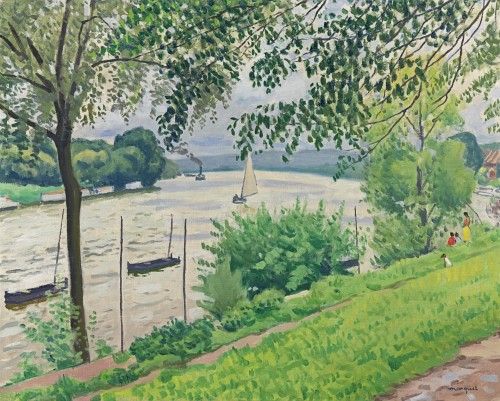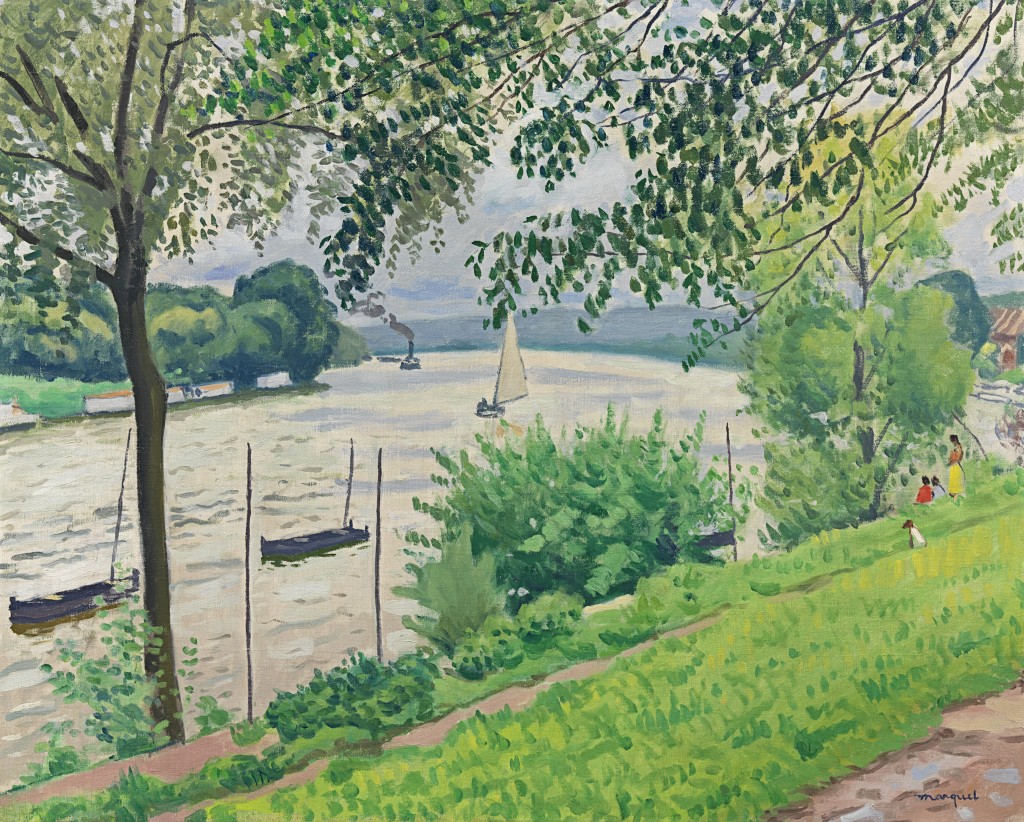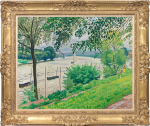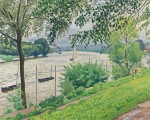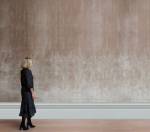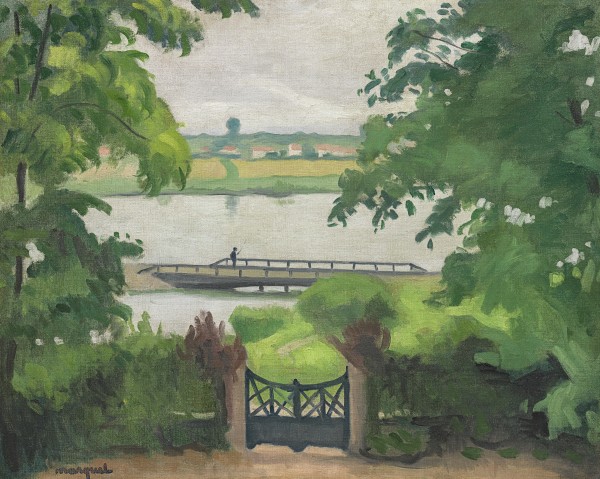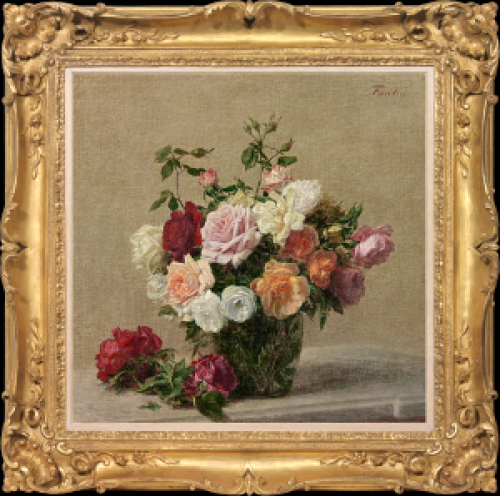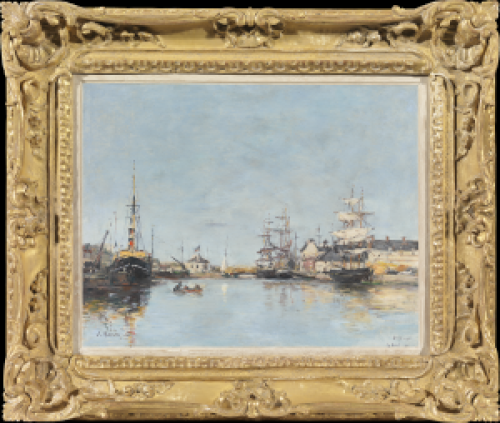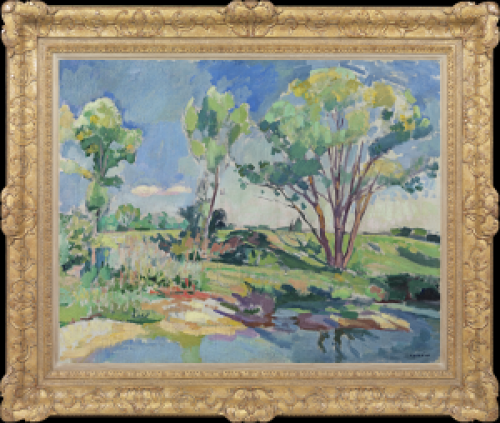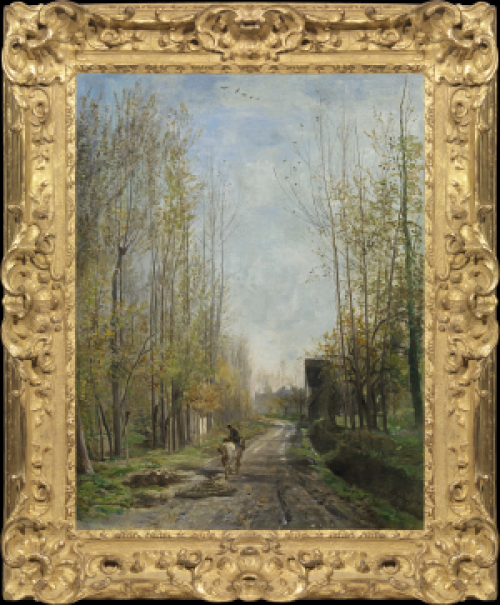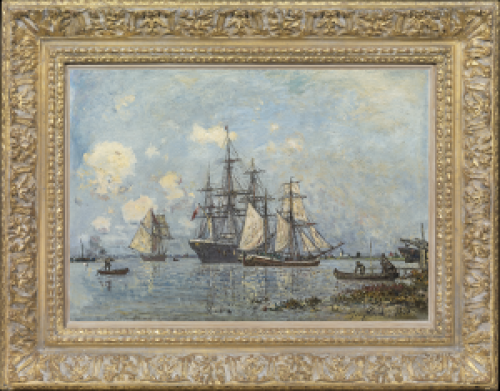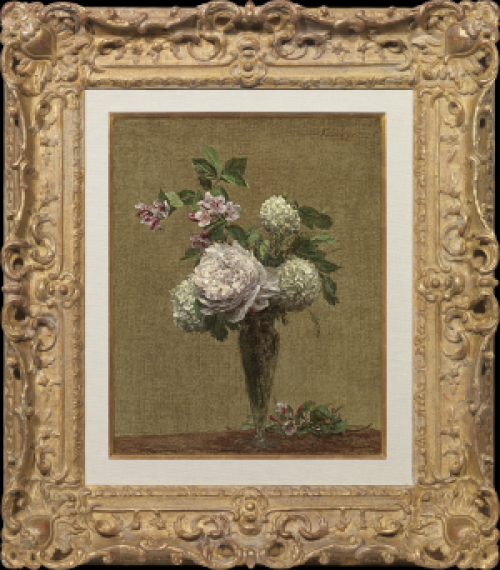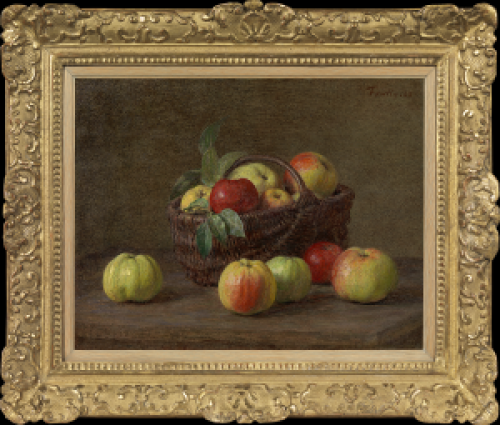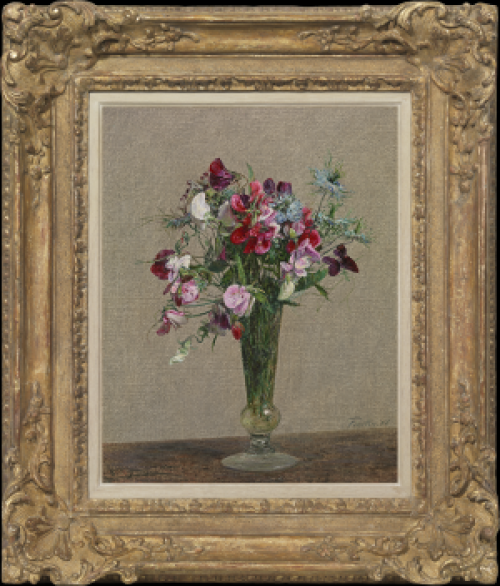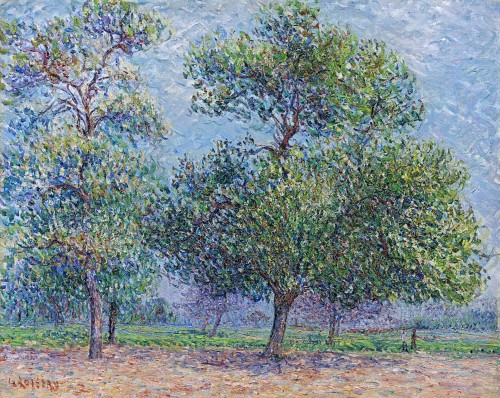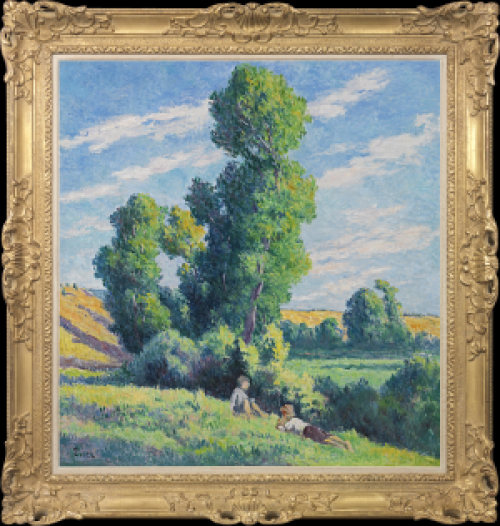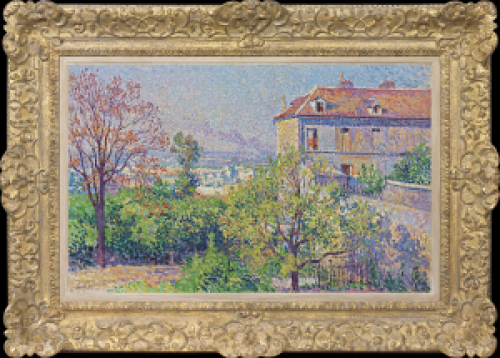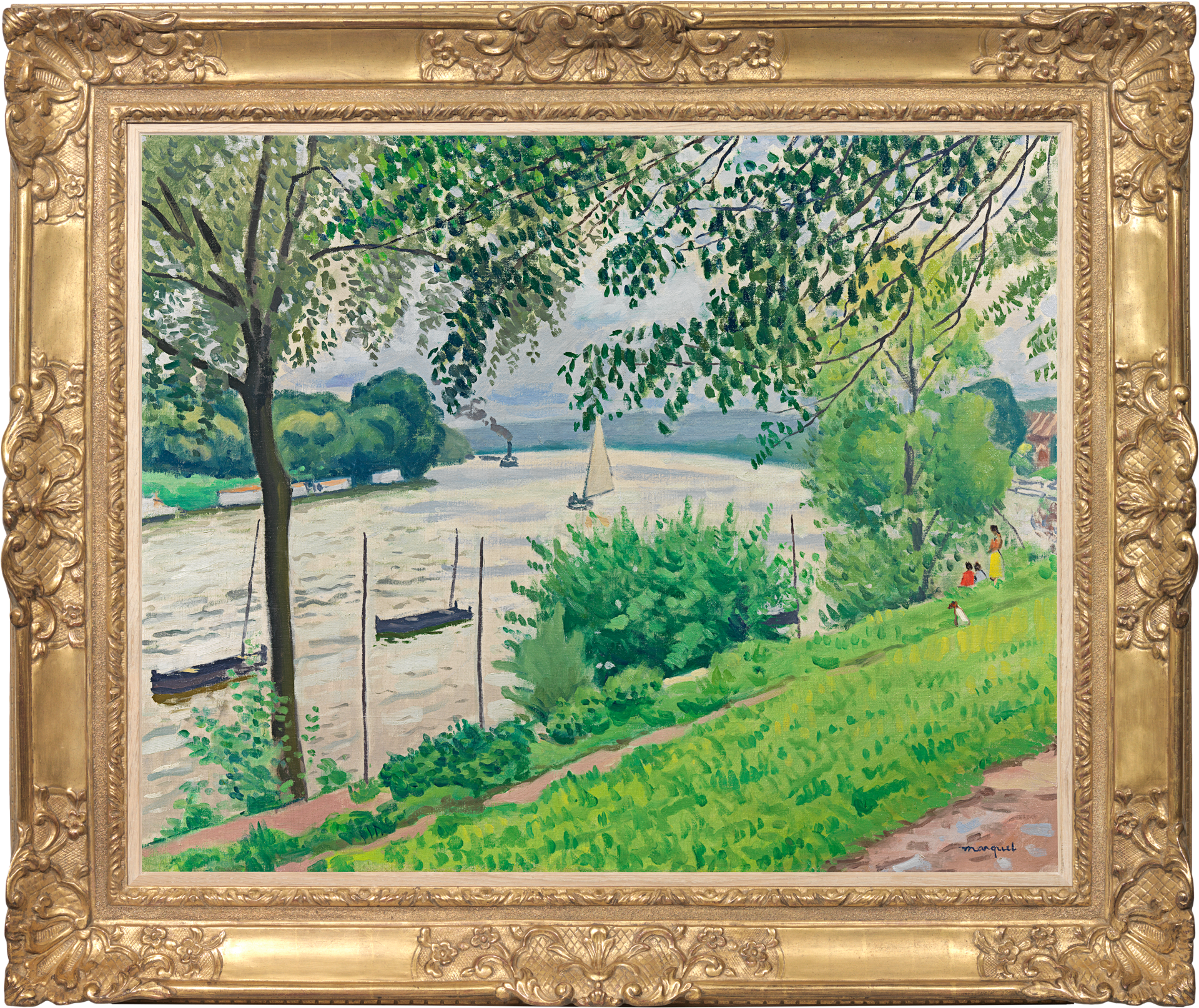ALBERT MARQUET
Bordeaux 1875 - 1947 Paris
Ref: CC 208
Triel, Bord de Seine
Signed lower right: Marquet
Oil on canvas: 25 ½ x 31 ¾ in / 64.8 x 80.6 cm
Frame size: 34 x 40 in / 86.4 x 101.6 cm
In a Louis XIV style carved and gilded frame
Painted in 1931
Provenance:
Private collection, UK;
a gift from the above to a private collection, UK on 1st June 1990
To be included in the forthcoming Digital Catalogue Raisonné of the work of Albert Marquet currently being prepared by the Wildenstein Plattner Institute, Inc.
Wildenstein Institute ref. 08.10.03/10738/1236
Albert Marquet lived on the banks of the Seine most of his life and became celebrated for his sensitive observation of Paris and its river. Fascinated by water, ports and coastline, he was also an inveterate traveller, visiting England, the USSR and North Africa, among other places, as well as exploring his native France.
As a young man in the studio of Gustave Moreau, Marquet forged friendships with Camoin, Rouault, Manguin and Matisse. They burst upon the Salon d’Automne in 1905 with vibrant colours and bold brushwork, leading a critic to dub them ‘Fauves’ (Wild Beasts). Marquet was closely associated with this group in the early years of the twentieth century. In his later work Marquet forged a highly individual manner influenced by aspects of Impressionism, the work of Cézanne and the graceful economy of Japanese landscape prints.
In the summer of 1931, Marquet and his wife Marcelle rented a house in the picturesque village of Triel on the Seine, twenty miles north-west of Paris on the edge of the Vexin forest. He made a number of views of the majestic curve of the river, including The Seine at Triel, 1931 (Art Institute of Chicago). The present painting reflects Marquet’s characteristically subtle response to the gentle light of northern France, in a symphony of greens and greys. The foreground grassy bank is a bold, almost chartreuse green, shading through the pea-green of the bushes on the riverbank to the dense, dark moss green of the trees on the further bank. A fringe of delicate foreground leaves gives movement and sparkle to the view. Figures on the bank, gaily dressed in red and yellow, and a brown and white dog provide touches of warm colour.
Marquet conceives his landscape in terms of a serene geometry, the verticals of trees and slender masts held in tension against the diagonals and horizontals of the land. The artist’s friend, the writer and politician Marcel Sembat, noted: ‘No artist has the same relationship with light as Marquet. It is if he owned it. He possesses the secret of a pure and intense light which fills all the sky with its uniform and colourless glow….luminous as daylight itself and so transparent that a painting by Marquet gives the impression of a large window being opened onto the outside’[1].
Albert Marquet, The Seine at Triel, 1931.
Art Institute of Chicago, Bequest of William McCormick Blair.
ALBERT MARQUET
Bordeaux 1875 - 1947 Paris
Albert Marquet was born in Bordeaux in 1875, the son of a railway employee, Joseph Marquet and his shop-owner wife Marguerite Deyres. A club foot made him sensitive and taciturn. Mother and son were close and Marguerite supported Albert’s artistic ambitions. He went to Paris to study at the Ecole des Arts Décoratifs at the age of fifteen. Six years later he joined the studio of Gustave Moreau, where he met and forged lasting friendships with Camoin, Rouault, Manguin and Matisse. During this period Marquet began to use the vibrant colours and bold brushwork that is characteristic of the Fauves, with whom he was closely associated. He exhibited at Berthe Weill and the Galerie Druet, Paris from 1902 and from 1903 at the Salon d’Automne.
After 1907 Marquet’s interest in Japonisme resulted in more sober works. He travelled extensively, frequently leaving his apartment on the banks of the Seine to visit England, Germany, Italy, the USSR, Scandinavia and North Africa, where he spent the years of the Second World War. Contrasting with the classical calm of Marquet’s landscapes are the realistic, erotic paintings and drawings of nudes that he produced in the first three decades of the twentieth century, including the Sapphic series of lithographs, the Académie des Dames (1920s). Marquet met his wife Marcelle Martinet, whom he married in 1923, on his first stay in Algiers in 1920.
The most profound influence on his work is that of the Impressionists and Post-Impressionists, notably Paul Cézanne. Like the Impressionists his favourite subjects were port scenes, beaches, quaysides, river views and coastal villages; he was particularly fascinated by the effect of light on water.
André Rouveyre, a fellow student in Gustave Moreau’s atelier, wrote: ‘Marquet reigns over the kingdom of light. The light that shines on the things of this world, of course, but also that which belongs to his pictures alone: a strangely regal quality that comes from his sensitivity and wisdom. Skies, hills, houses, streets all bathe in his subtle but intense lights’.
The work of Albert Marquet is represented in the Musée d’Orsay, Paris; the Centre Pompidou, Paris; the Musée des Beaux-Arts, La Rochelle; the Musée de Grenoble; the Hermitage, St Petersburg; Tate, London; the Metropolitan Museum of Art, New York; the Art Institute of Chicago and the National Gallery of Art, Washington DC.
[1] Quoted in London, Wildenstein, Albert Marquet, 1985, p.6.

